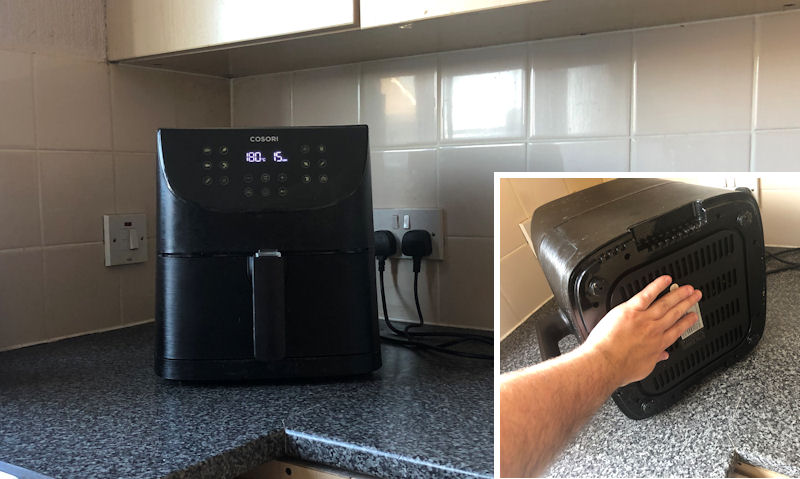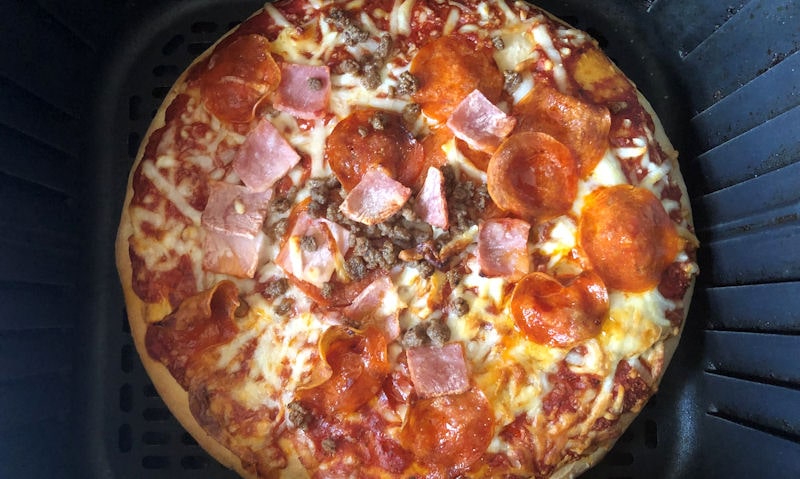Does the Bottom of an air fryer get hot
Experience tells me air fryers don't get hot on the bottom but I can't guarantee this for all, yet if it does for you this could be a sign of a faulting air fryer.
Bottom of any air fryer should only get mild to warm at best as manufacturers concentrate what is dangerous hot air emitting out of the air fryer - to the rear as it remains out of reach to most of us. If you're concerned about your countertop, simply sit the air fryer on an object to protect the surface.
While I am fully in to air fryers and will cook just about anything possible, I do get concerned about the air fryer developing an issue due to extended use.
What I have found in the process, is all sides of the air fryer can get hot on the outside but it shouldn't be hot enough to burn you. I continue to feel all sides to be sure the temperature hasn't risen over the entirety of its use.
Change in external temperature could in fact be a sign the air fryer is on the way out.
As I do check on the outside temperature once in a while, I now check to see if the bottom of the air fryer gets hot. Never has any air fryer of mine in the past and present - ever got above a very mild to warm temperature.
Only after ten minutes of cooking in an air fryer, should you use this opportunity to feel around the bottom with your hands to check now if its safe to.
How hot air fryers get on all sides of the air fryer can vary between one air fryer to the next, and while both sides and front should be fine; do bear in mind the rear is where the hot air is released, and will naturally get extremely hot.
Do take precautions in the meantime which involves allowing for plenty of ventilation on all sides and underneath; where a 5-6 inch distance between air fryer and back/side wall must be observed at all times.
Bottom will get warm only
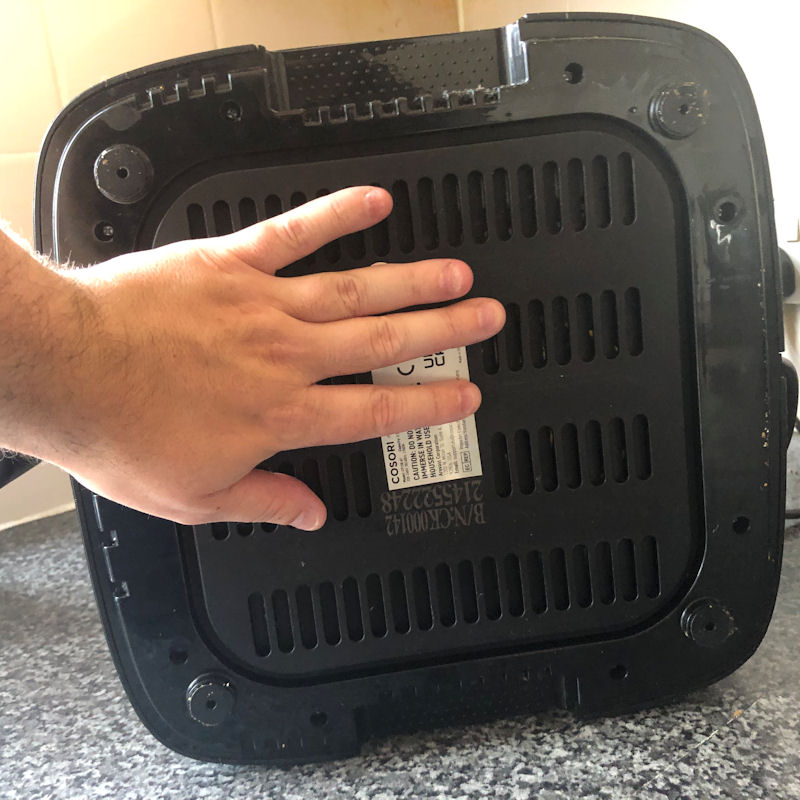
In my personal experience of operating three different air fryers, from Ninja and Cosori - and my first air fryer I don't remember the brand name - I can't ever recall being concerned about the heat emitting out of the bottom of the air fryer.
Probably why that is because all air fryers were located in the corner of the kitchen worktop, and on top of what was a cheap laminated counter.
So you see if this poorly made counter ever got damaged, it wasn't something me or anyone else in the family really cared about.
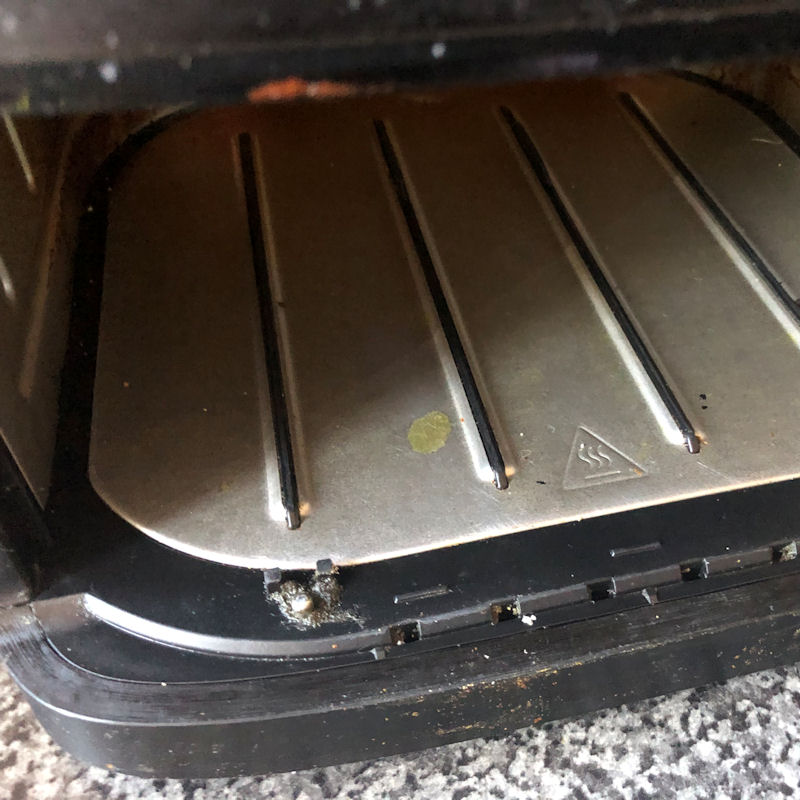
Only realizing now do I understand others will be concerned about what could be a wooden surface which risks leaving marks, and what could be an incredibly expensive granite countertops all used to locate an air fryer.
What I have found with my current air fryer which is a Cosori CP158-AF air fryer, is it only gets mildly warm on the bottom - so mild in fact I am sure its safe for a baby to touch.
Air fryers are generally well insulated on the very bottom of the air fryer, which is the base of the air fryer; between the opening where the basket pulls out, and the underside of the air fryer where you will have concerns about the external temperature.
Manufacturer's produce an insulated base section so the heat can't escape pass the internal drawer, which means the outside bottom will feel warm only.
Unlikely to cause surface damage
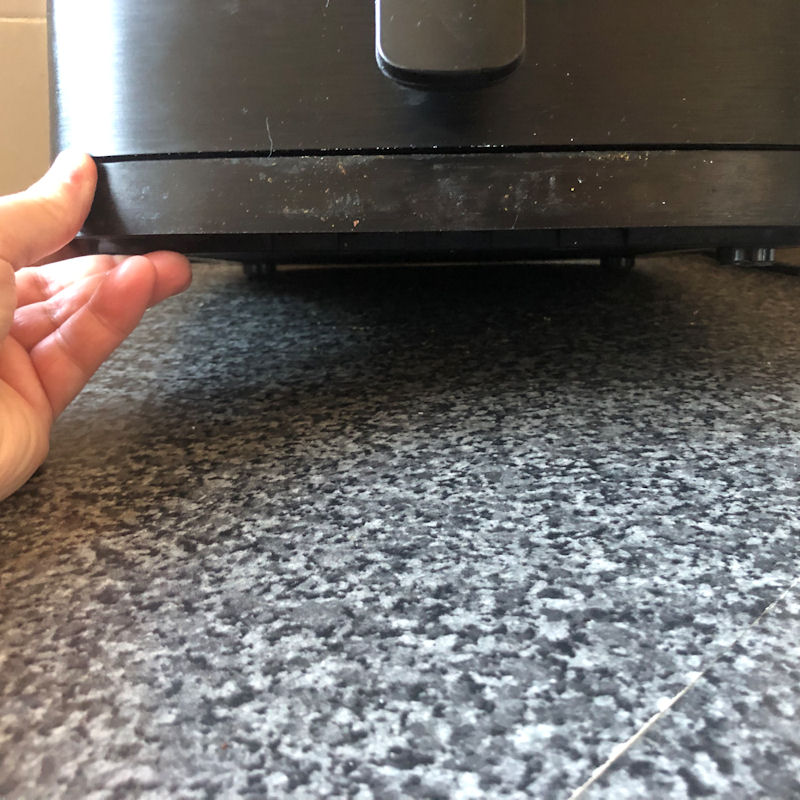
I speak for this particular air fryer only because its the only time I've paid attention to how hot the bottom of the air fryer gets.
Now I've taken a really hard look at the cheap laminated wooden surface the air fryer is positioned on, to find zero marks left on the countertop.
Am I concerned about burning my countertop from hereon in? Not really, as I am 99% certain manufacturers will make sure that never happens - which could also cause condensation if it did - and thus hot air isn't near the vicinity of fragile surfaces - and of course hot air is kept out of reach of people.
Instead big brands of air fryers will always make sure the heat emitted out of the air fryer is largely blown via of the rear, with warmer air coming out of the top.
I've noticed a mark develop on my kitchen titles in the rear of the air fryer, which is actually where the extraction fan is located in the rear of the air fryer; and with that, it wasn't anything a damp soapy cloth can quickly clean up.
My countertop continues to be burn-free with no visible signs of lasting stains or marks,
Allow for ventilation
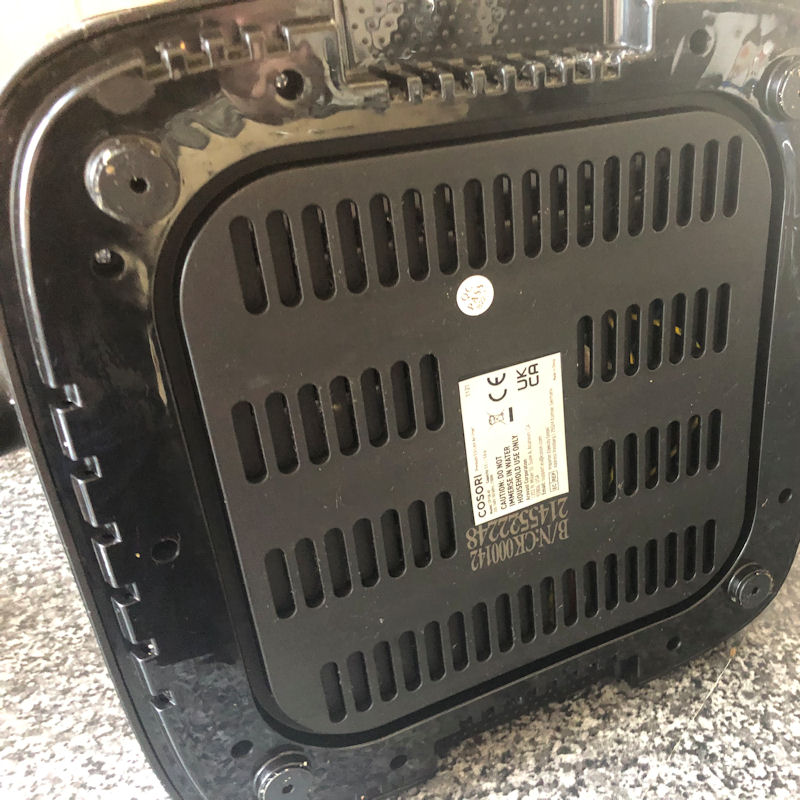
I can't guarantee your particular air fryer won't get hotter than normal underneath it, and if it does I am sure its a fault of the air fryer.
To be extra cautious you can think about putting something under the air fryer to protect the counter, if that is what you're afraid of.
I would also think about making sure the air fryer when turned on and cooking, is always out of reach of children.
I don't think its anything to really be concerned about though but it never hurts to carefully lift up your air fryer to one side, and check for yourself how hot it really is. Check it once a week at least to be sure there's no change in the external temperature.
In the meantime, I would make sure there's always plenty of ventilation at the bottom of the air fryer - which is why air fryers sit on 4 small rubber stumps - to ensure what should be warm air only can escape.
Not allowing warm air to escape on all sides of an air fryer will only cause condensation, which can lead to fire.
Summary
Its highly unlikely the area where you position your air fryer on your kitchen countertop will ever burn or leave marks caused from the bottom of an air fryer.
Air extraction is concentrated to the rear of the air fryer - and so to the top - to ensure the hottest air flow is kept far out of reach of people.
I have used three different air fryers over the last four years, of which I have never had issues with the bottom of the air fryer. If the air fryer underside surface isn't mild to warm, often it stays cold which proves the air fryer is functioning as it should.
I don't think an air fryer can cause damage to a granite or newly installed oak countertop, but it doesn't hurt to take measures.
Rather than continuing to check on your countertop sporadically, simply sit the air fryer on something that will absorb any heat.
You must always allow plenty of ventilation underneath an air fryer even with no direct air extraction, as you'll risk causing a build up of condensation if you aren't careful.
